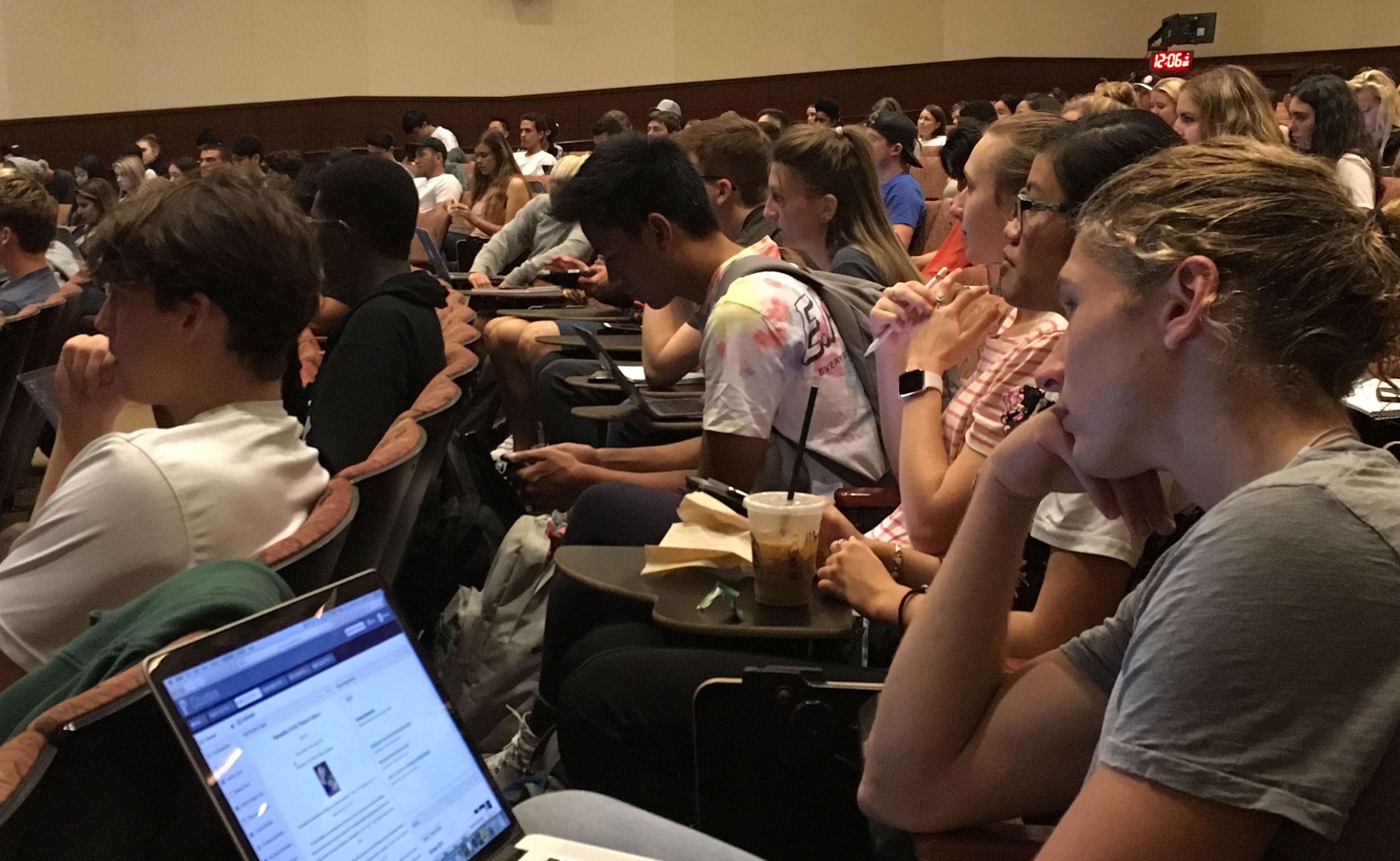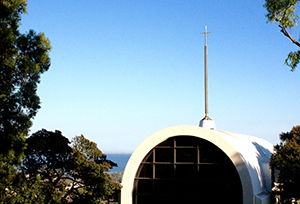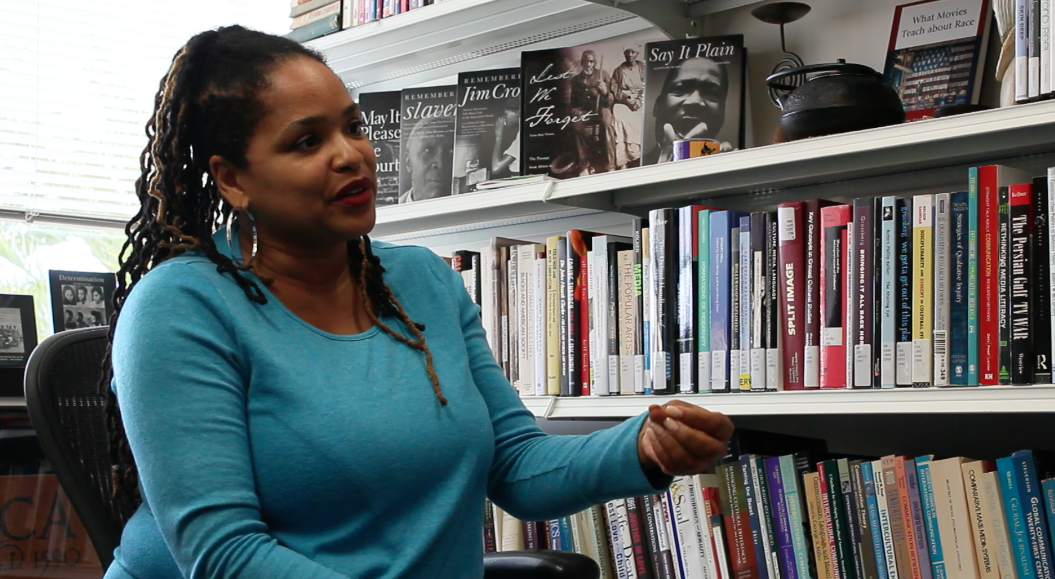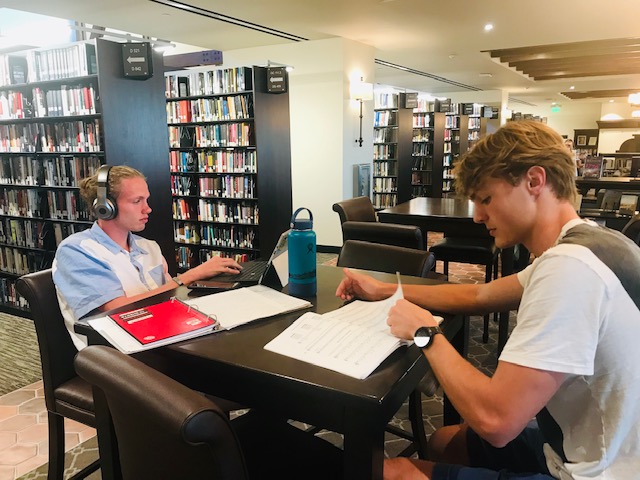
Flipping pages. Clacking keyboards. Sloshing coffee. Chatting friends.
Together these sounds are the pulse of Pepperdine University’s heart: Payson Library.
Since 2017, Payson Library has continued to beat steadily by providing students with an innovative study space that practically bleeds caffeine. Given Payson’s new role as both the academic and social heart of the university, opinions are divided on how well students can effectively study.
“The rebuilding of the interior space [of Payson Library] has really set the bar at a new level,” Dean of Libraries Mark Roosa said. “I think more importantly, it has given students a whole range of new possibilities for their studies and for learning.”
The noise from Starbucks and the limited number of study spaces available have caused student concerns. However, experts believe Payson Library is the best study space available to Pepperdine students.
Academic and social design
A Pepp Post poll of 77 students found that about 61 percent choose Payson Library as their main on-campus study spot.
Roosa said Payson’s design helps students with their studies because it “creates a multiplicity of spaces where students [can] find their own spot.”
Roosa said Payson’s design accommodates different learning styles through the mixture of social “soft spaces” and formal “high-impact learning” areas found on both levels of Payson Library.
This student-friendly design has increased student traffic to the library.
“We have counted the number of students coming in and we are seeing, on average, about 3,000 students a day coming into the building, which is quite high,” Roosa said. “ It’s almost twice as much as before.”
The high number of students is encouraging but the library administration is aware that students go to Payson for more than just study, Roosa said.
“We think part of that [high student traffic] is due to the ‘Starbucks effect’ but we think part of that is due to the fact that the library is now a social gathering space on campus,” Roosa said. “It’s satisfying a lot of the needs we think our community had.”
Ben Veenendaal, the project director of Design and Construction, said it was his goal to turn the space into the academic hub of the university where students would want to come and stay and meet friends.
“The design of the library is a lot more social, you can see a lot more open space,” said Wil Cargioli, the public services evening supervisor of Payson Library.
Administrators have also seen an increase in faculty traffic to the library as a result of the more social atmosphere, Roosa said.
Humanities Professor Michael Gose said he has noticed that Payson Library is “lighter, friendlier and more comfortable” for students. He said the number of students there has encouraged him to visits two to three times a day because he will likely run into someone he wants to see.
Caffeine and complaints
The Pepp Post poll found that about 21 percent of students said Starbucks is their primary reason for going to Payson Library.
While many students appreciate the coffee that Starbucks provides, the noise it creates is hard to ignore.
“The caffeine that come from the coffee is definitely an aid to most students. I can speak from personal experience on that,” said Steven Baer, a senior media production major and library ambassador. “However, as far as noise pollution goes, there are times when it gets rather rauccous down here.”
Administrators advise students who find the space too noisy to use other spaces in the quiet zones and to inform them if more solitary areas are needed, Roosa said.
Both Roosa and Veenendaal said they designed the Starbucks with a glass sliding door to block noise in case the area becomes too disruptive.
Enough study spaces for students?
In the Pepp Post poll, almost 39 percent thought the library does not have enough space for students.
Julia Chin, a junior business administration major, is concerned by the large number of students in the library each day.
“I honestly didn’t expect Payson to be this crowded because freshman year we only had the [Library] Hub and the HAWC, and those weren’t really crowded at all,” Chin said. “They were more like social areas. So you would think that if you took everyone who was studying there and put them in one place it would be like kind of a nice quiet little area.”
Another 8 percent thought the number of students depended on the time of day and semester.
“Come midterms and finals there is going to be an awful lot of competition for the space,” Gose said.
However, with the Payson redesign, the library has been able to accommodate more of Pepperdine’s 3,604 total undergraduate population by creating 15 more study rooms, Roosa said.
“In addition, we have created more seats, we have something like 900 seats in this building, which is about twice as many as we had in the old building,” Roosa said.
Roosa said Payson Library accomplished greater space in the library by rearranging shelves and moving one-third of the books to the Calabasas Campus Library.
Student praise
A Gensler Research online survey of more than 1,000 students found that students spend an average of 13.5 hours per week studying or working alone and about four hours per week on group work.
Comparatively, the Pepp Post poll found that most Pepperdine students spend an average of four to seven hours per week in Payson Library.
Tanner Provencher, a first-year religion and philosophy double major, said he loves Payson’s atmosphere.
“I find it the only place on campus that I can study over a certain period of time,” Provencher said. “If I have a lot of studying to do, I am going to go to Payson and devote three to four hours to my studies.”
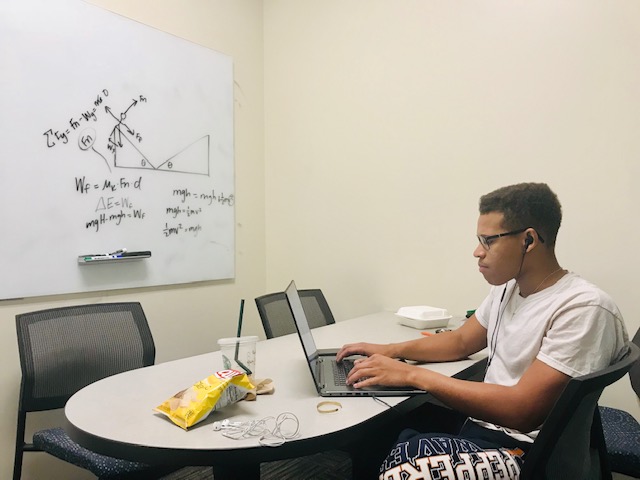
Study spaces and habits
Pepperdine Psychology Professor Janet Trammel studies cognitive processes and learning principles. She said Payson has had the largest impact on students’ study habits.
“In terms of resources there and in terms of having a consistent place that you know is always going to be open for you Payson Library is great,” Trammel said. “In terms of being able to predict that you’re going to be able to concentrate and not be disruptive – then it’s not that great.”
By providing a constant study space, Payson Library helps students study because students can more easily go into study mode when they are used to studying in an area.
“I think it’s effective, personally, because I am able to do my work efficiently and give myself breaks,” said Christian Abad, a sophomore business administration major. “But I know that people I have talked to don’t like it as much because they feel that the library should be a quiet place and no one should really be talking. I guess it depends on how you work and your best study styles.”
Trammel said that although learning preferences exist, learning styles are a myth. She referenced an October New York Times article that said there is no scientific evidence to support the existence of learning styles.
“So for me, kind of having these different spaces that are geared toward different learning styles is waste of time and resources,” Trammel said. “It would have been better to focus those spaces on how to get people to focus, concentrate and create or mimic the test environment.”
Trammel’s No. 1 advice to students would be to study in the classrooms where the tests will take place because research shows students perform better when their study and testing environments match.
That is the reason why Trammel also recommends listening to white noise over music when studying because the mind ties what students are experiencing when studying with the material being studied.
Trammel said that if you study with music, that music will be linked with the study material. So when the music is not there during the test, the studied material is harder to recall. She said white noise is much easier for the mind to recreate during the test, making it easier for students to recall information.
“I think Payson Library has the right idea, with the study rooms particularly, because they are a great resource,” Trammel said.
In the Pepp Post poll, students voted on their favorite study spaces in Payson and what areas gave them difficulty. The poll found that a majority of students prefer the private study rooms and report difficulty in active spaces that do not mimic the classroom environment.
Maps available on the Payson website.
Trammel recommended that students utilize Payson Library because it is a good constant space for the limitations that are always going to exist on-campus.
“I think Payson did their research so there’s not much I would say they could improve,” Trammel said.
Aubree Ouellette completed the reporting for this story under the supervision of Dr. Christina Littlefield and Dr. Theresa de los Santos in Jour 241 in fall 2018. Dr. Littlefield supervised the web story. Dr. de los Santos supervised the video package.

